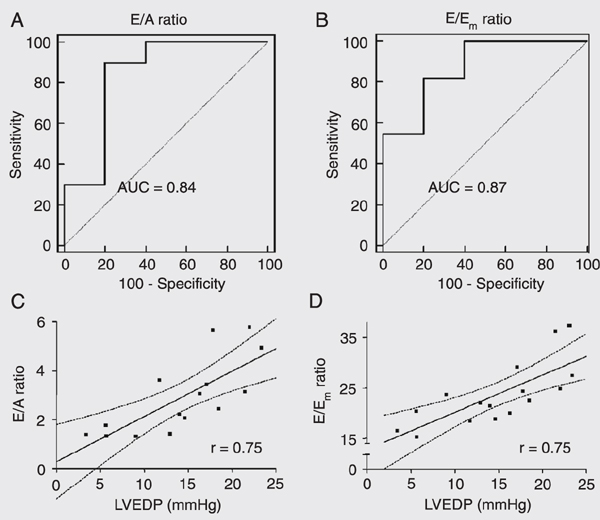The severity of left ventricular (LV) dysfunction in rats with myocardial infarction (MI) varies widely. Because homogeneity in baseline parameters is essential for experimental investigations, a study was conducted to establish whether Doppler echocardiography (DE) could accurately identify animals with high LV end-diastolic pressure as a marker of LV dysfunction soon after MI. Direct measurements of LV end-diastolic pressure were made and DE was performed simultaneously 1 week after surgically induced MI (N = 16) or sham-operation (N = 17) in female Wistar rats (200 to 250 g). The ratio of peak early (E) to late (A) diastolic LV filling velocities and the ratio of E velocity to peak early (Em) diastolic myocardial velocity were the best predictors of high LV end-diastolic pressure (>12 mmHg) soon after MI. Cut-off values of 1.77 for the E/A ratio (P = 0.001) identified rats with elevated LV end-diastolic pressure with 90% sensitivity and 80% specificity. Cut-off values of 20.4 for the E/Em ratio (P = 0.0001) identified rats with elevated LV end-diastolic pressure with 81.8% sensitivity and 80% specificity. Moreover, E/A and E/Em ratios were the only echocardiographic parameters independently associated with LV end-diastolic pressure in multiple linear regression analysis. Therefore, DE identifies rats with high LV end-diastolic pressure soon after MI. These findings have implications for using serial DE in animal selection and in the assessment of their response to experimental therapies.
Heart failure; Myocardial infarction; Echocardiography; Hemodynamics





